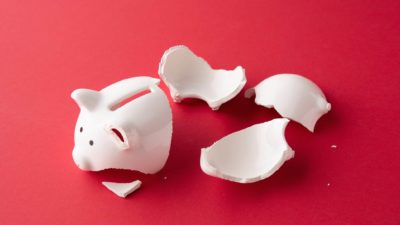There're few things more exciting than debating about the merits of Australia's two biggest asset classes on the weekend!
In case you missed that, I am being sarcastic – although the COVID-19 crisis is an opportune point to review your asset allocation.
There have been comments by experts in the press recently that property bears are wrong and that house prices will stay flat or dip by 5% or less right through the pandemic.
Property vs. shares
If those arguments hold true, property could make a better option than shares, particularly for those who can't stomach the volatility or are close to retirement.
But there are a few holes in the logic that need to be examined more closely. One of the key arguments from property bulls is that gross rental yields of 5% is very attractive in this near zero-interest rate environment.
The many meanings of the word "gross"
The issue I have is that the "gross" means different things when it comes to property and shares. For investment properties, gross rental is the amount the landlord gets before expenses.
This means the actual (or net) return is always going to be lower. The opposite is true for shares that pay franking credits where the net return is before franking.
Skinny risk-adjusted yield
What this means is that a residential investment property with a gross yield of 5% will likely generate a 2% net return after you pay the rental agent, mortgage, insurance, property taxes, council rates and other operating expenses.
And this assumes you don't get a vacancy in that current financial year. If you did, you'll lose another two to three months of rent depending on how long it takes you to find a tenant in this market.
That's a pretty skinny return, especially if you can get 1% on some bank deposit products – risk free!
How dividend yields stack up to rental yields
Property supporters will point to the falling dividend yield on the S&P/ASX 200 Index (Index:^AXJO), no thanks to the big banks like National Australia Bank Ltd. (ASX: NAB) no doubt!
Nonetheless, even if we assumed a 30% dividend cut across the ASX 200, the net yield is still likely to be over 3% net, or just over 5% gross.
We also shouldn't forget that rents are falling due to the swelling ranks of the unemployed. Many of them may need more than six months to get back on their feet and I believe this will have a big impact on property prices and their ability to get a home loan.
Reasons to stick to property
There are only two possible reasons why an investor will favour residential rents over share dividends. The first is because negative gearing makes it worth their after-tax while. The other is to bank on rising property prices.
If the yield argument is removed, and if you don't buy the "V" shape recovery for jobs or a resurgence in immigration, then the outlook for home property prices looks bleak.
This is less so for shares as the stimulus from the central bank will have a more direct positive impact on financial assets than real assets.
Whoever coined the term "safe as houses" might need a rethink.








